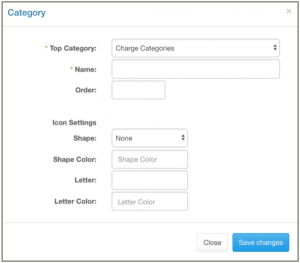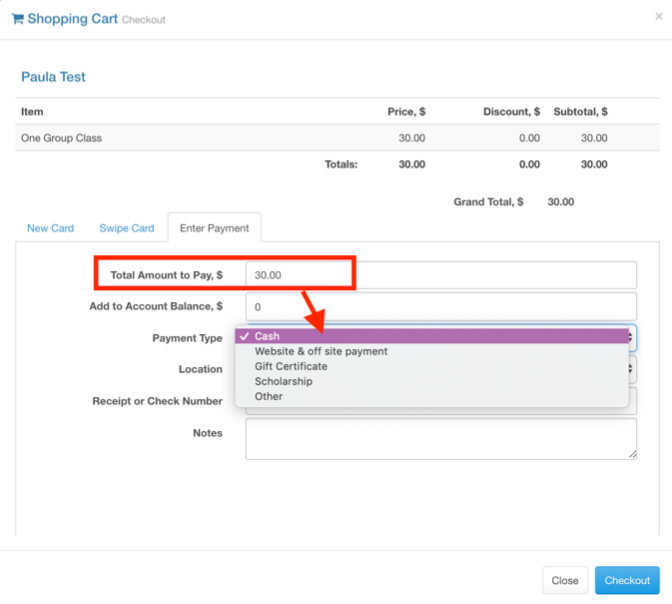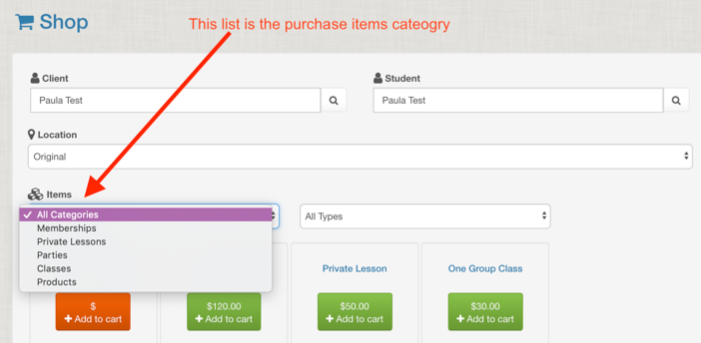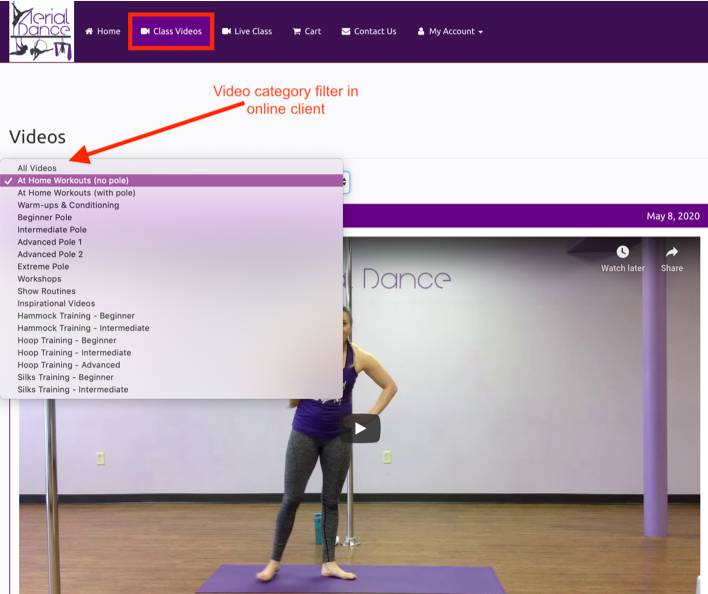Categories
Categories are a main input area to customize your Fit Studio Manager and one of the first places you should begin set-up. For each category you will want to set-up the options that fit your business. Below are the are tips and explanations of the category options and where they are used in the software.
Creating & Editing Categories
Find “categories” under the “Settings” drop down.

Select that category you wish to edit from the drop down list on the upper left.
Edit an existing category by clicking on the pencil on the left of each row.
Archive an existing category by clicking on the trash can on the left of each row.
Add a NEW category to the list be clicking the “new category” box on the upper right.
A pop-up box will open.

Name your new category.
Select the order (numerical number) you would like the new category to appear in relation to the others in this list. For example, if it is used a lot give it a low number so it is at the top and easiest to access when the list of options comes up.
Ignore the “Icon Settings” for all categories except Membership.
Types of Categories
Billing Schedules
This is normally turned off in FSM and has to be turned on in global settings if you need to use it.
Charge Categories
Class Category
This is normally turned off in FSM and has to be turned on in global settings if you need to use it.
Class Category is not a standard filter but it is used specifically for when booking online private lessons so turn it on and set categories if you plan to utilize the online private lesson booking feature in FSM.
Class Genres (important!)
Class Levels (important!)
Class Locations
You are not charged for having “multiple locations” in FSM if you add locations here; therefore you can add an “online/virtual location” or and “organizational” location if these would help you stay organized. In global settings you can have your calendar show locations all together or on separate tabs. You can choose to have one location but if you have an in-person program as well as an online program you may find it helpful to set up both here so you have an easy filter options and the ability to separate out this classes easily in the future.
Class Programs
When creating a class you will need to select a “class program”. These are also used as a filter item for students when searching for a class in the online client (if you turn that on in global online client settings) and as a filter for you when viewing your list of classes.
How Hear Items
When filling in the student profile informant they can list what how they heard about your studio. You would enter possible marketing/advertising avenues here for them to choose from. This data can be pulled up in the “how did you hear” report.
Inventory Colors
If you plan to set up your inventory for sales and tracking in FSM you will want to fill out the options here for future selection.
Inventory Sizes
If you plan to set up your inventory for sales and tracking in FSM you will want to fill out the options here for future selection.
Member Categories (important!)
This is the start of a very robust aspect of Fit Studio Manager. The membership features are versatile and students can have multiple membership types active at once. In the category section you will create your possible memberships. These will then be used to: run membership reports or address/email lists, send mass emailings, gain access to on-demand videos, get discounts, be able to register for different types of classes, and more. The membership categories give students access to many different things within the system and you create the basic shell here. You WANT to select an icon for membership categories because it will then be next to the student name in the roster to quickly identify them.
Message Categories
These create filters to help you find emails and sms faster in your system. Examples to consider are: marketing emails, finance emails, registration emails, etc.
Payment Methods (important!)
Add payment methods that your studio uses BESIDES credit card, ACH and account here (those three are built into the software). The payment added here will be selected from the drop down menu in the store and will show up (if used) on the gross income summary report. Things to consider are: off software payments, write offs, etc.
Payment Schedules
This is normally turned off in FSM and has to be turned on in global settings if you need to use it.
Part of the global tuition option, Payment Schedules allow you to have different payment options for a class, so maybe monthly is $100/month, quarterly $260, or annually $800.
Purchase Item Categories
You select a “purchase item category” when creating a sales item. These are then displayed in the shopping cart as a drop down menu to help you quickly find the specifically sales item.
Time Clock Categories
If your staff clock in and clock out for payment, here you can set categories that within their profiles you can then assign different rates for different categories. Example: Teaching, Manager, Staff Meeting, etc can then all have different dollar amounts associated with them for each staff member and when that staff member clocks in they would pick the category they are working for proper payment logging.
Video Categories
When using the “on demand” class videos feature, you have the option to select a video category. This then appears as a filter option in the student online client to help them filter their videos and find the one they are looking for.




